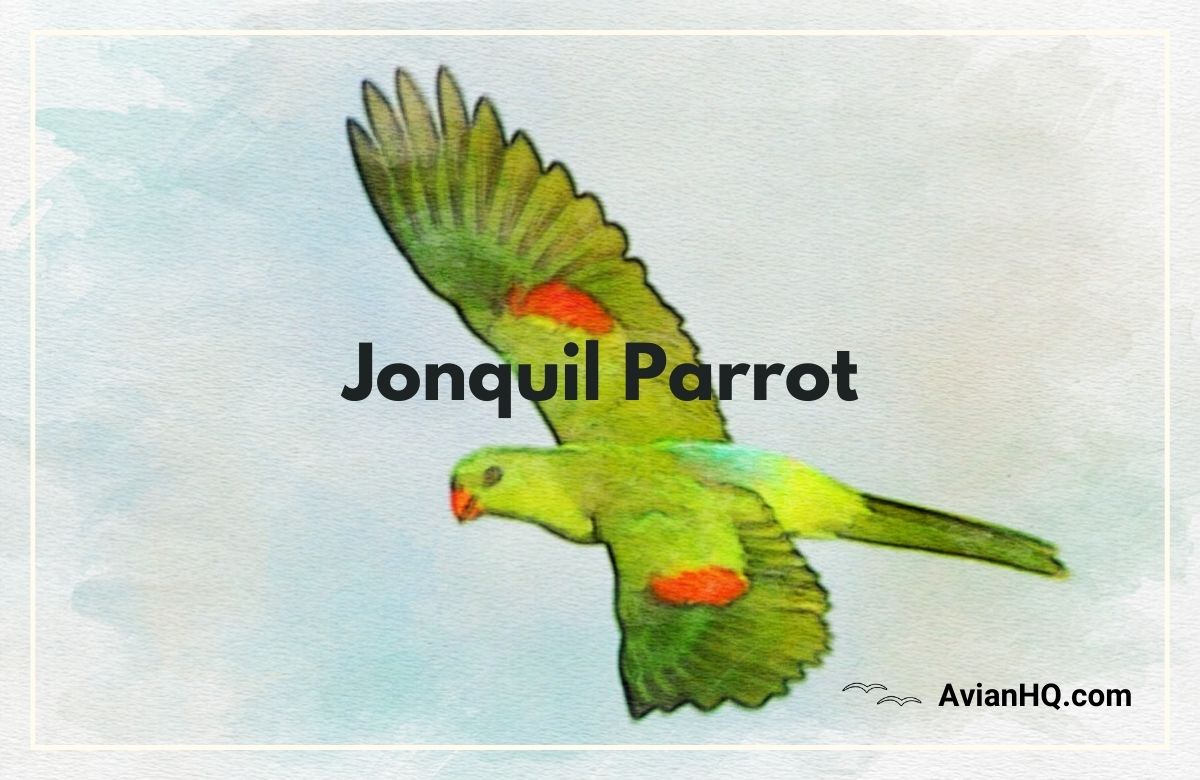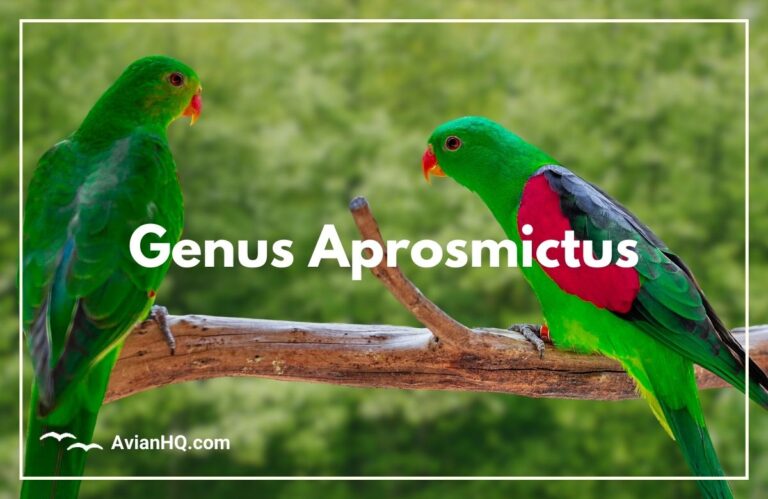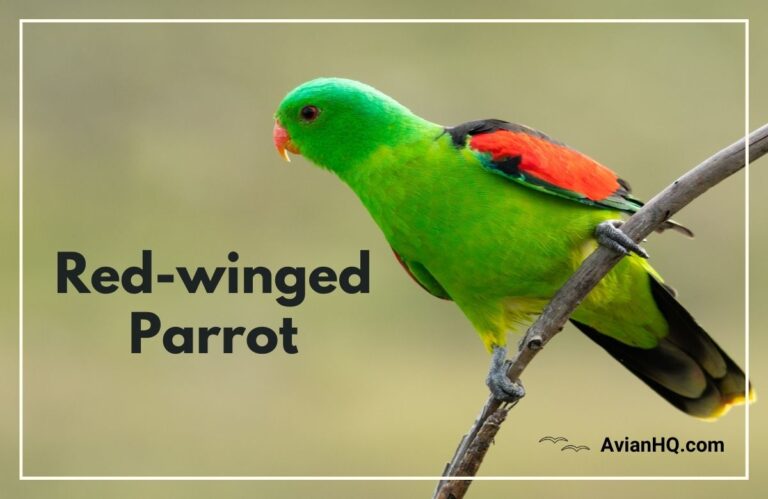Jonquil Parrot (Aprosmictus jonquillaceus)
The brilliant plumage and vocalizations of parrots have captivated people for centuries. As you learn about these intelligent birds, you may come across some less familiar species like the Jonquil Parrot. With it’s vibrant green and yellow colors, this parrot native to islands in Indonesia makes a striking impression.
“The Jonquil Parrot’s bright colors and loud calls are a vibrant sight and sound in it’s forest habitat.”
At around 13 inches (35 cm) from head to tail, the Jonquil Parrot is a medium-sized parrot. It’s scientific name, Aprosmictus jonquillaceus, references it’s jonquil flower-like yellow and green hues. Two subspecies exist, each occupying a distinct home range.
While small flocks sweep through the forest canopy foraging on fruit and seeds, this parrot’s existence is not carefree. The Jonquil Parrot is considered Near Threatened, meaning it faces threats putting the species at risk. As you read further, you’ll learn details on the Jonquil Parrot’s appearance, habits, ecosystem role, and conservation story. This lesser known tropical parrot deserves appreciation and increased protection efforts.
History and Taxonomy
The Jonquil Parrot’s scientific name comes from the early 19th century, but little documentation exists about it’s original discovery. The genus name Aprosmictus refers to parrots lacking red or orange plumage, while jonquillaceus references the yellow flowers that inspired this parrot’s common name.
This tropical parrot has two distinct subspecies that vary slightly in size and coloring:
- A. j. jonquillaceus: Native to the islands of Timor and Roti spanning about 15,700 square miles (40,700 sq km)
- A. j. wetterensis: Only found on the small Wetar Island of about 620 square miles (1,600 sq km)
The minor physical differences between the subspecies could suggest adaptations to the conditions across these isolated island habitats separated by 60 miles (100 km) of ocean. Their limited distributions classify the Jonquil Parrot as a restricted-range species facing higher risks of extinction. Protecting both unique populations is crucial for preserving genetic biodiversity.
Physical Appearance
With it’s vibrant plumage, the Jonquil Parrot makes a striking impression. These are medium-sized parrots measuring about 13 inches (35 cm) long. Their tails account for almost half their length. Adults weigh approximately 4.5-5 ounces (130-140 grams).
Several physical traits define these birds:
- Colorful plumage: Most of the feathers are bright green, with more blue-green tones on the back and wings. The rump feathers have a vivid blue hue. The most eye-catching colors come from the wing patches and tail feathers, which shift from greenish-yellow on females to a deeper orange-red on mature males.
- Stout orange bill: Their thick beaks measure up to 1 inch (2.5 cm) long. While useful for cracking hard nuts and seeds, the bill also aids climbing and gripping branches.
- White eye-rings: Contrasting the orange irises and pupils are distinctive rings of small white feathers encircling their eyes.
- Gray feet: Their zygodactyl feet have two toes facing forward and two facing back for gripping and climbing.
The two subspecies differ slightly in size and in the exact hue of green feathers. However, the colorful wing patches remain the most obvious distinction between mature males and females. Juveniles resemble adult females but lack the bright wing plumage, instead showing all green wings.
Habitat and Distribution
The Jonquil Parrot resides exclusively on a few Indonesian islands, including Timor, Roti, and Wetar. These tropical islands provide ideal forest and woodland habitat for the parrots to thrive.
Their natural range covers approximately 16,300 square miles (42,300 square km). The birds live in various wooded regions from sea level up to 9,200 feet (2,800 m) elevation. Specific habitat types include:
- Primary and secondary forests
- Deciduous woodlands
- Acacia and pine savannas
- Areas near streams and coastal mangroves
The parrots prefer older growth forests but may also forage in selectively logged areas. The two subspecies occupy geographically separated ranges:
- A. j. jonquillaceus: Native to Timor and Roti
- A. j. wetterensis: Only found on Wetar Island
No introduced populations are known outside of their native islands. Protecting habitat across these islands remains vital for securing the future of both unique subspecies in the face of deforestation threats.
Diet and Feeding
The Jonquil Parrot utilizes an omnivorous diet well-suited for it’s arboreal lifestyle. By foraging for a diverse blend of fruits, seeds, flowers, and insects high in the forest canopy, these adaptable tropical parrots obtain enough nutrients and energy to power their active lifestyle.
Their wild diet likely resembles that of their close relative, the Red-winged Parrot, which shares the same island habitats. Observed food sources include:
- Fruits and berries: figs, podocarpus, strangler figs, palms
- Seeds and nuts: acacia, pines, globe artichoke, cycads
- Flowers and nectar from eucalyptus, ginger plants, banana trees
- Insects and larvae
This varied nutrition supports year-round breeding capabilities. In mangrove habitats, favored foods are mistletoe fruits and the seeds of native deciduous trees.
Feeding behaviors primarily involve climbing, clinging, and crawling along branches while foraging. Their sturdy beaks efficiently crack hard nuts and remove fleshy fruits. They likely strip seeds and flower parts with their tongue and brush-tipped tongues. Flocks exhibit social foraging behaviors and probably communicate food sources within the flock using an array of vocalizations.
Breeding and Reproduction
Many details on the Jonquil Parrot’s breeding habits and rearing behaviors remain uncertain. Their reproduction likely resembles the breeding ecology of the similar Red-winged Parrot.
These monogamous parrots nest in tree cavities, likely seeking out decaying stubs of dead palms, eucalyptus, or pine trees. Nesting may occur:
- In natural tree hollows
- In hollows excavated by other birds
- In very deep termite nests
The breeding season spans spring into early summer. Like many parrots, mating pairs aggressively defend their nest site territory from other birds.
Clutch size is typically 4 or 5 eggs. The female incubates the eggs for around 20-30 days before they hatch. Both parents feed regurgitated food to hatchlings over 6-8 weeks until they leave the nest.
From hatching to independence, key milestones in a typical timeline include:
- Incubation: 20-30 days
- Hatching: Nestlings are helpless, eyes closed, only down feathers
- Fledging: Leaving the nest cavity at 5-6 weeks
- Weaning: Parents continue feeding chicks for 2 more weeks
- Independence: By 8 weeks old
No data exist yet on lifetime reproductive rates. Threats from poaching and habitat loss likely reduce average litter sizes. Continued research can clarify details related to their reproduction to support conservation.
Behavior and Ecology
The Jonquil Parrot exhibits many typical parrot behaviors shaped by their arboreal existence in the island rainforests. Their flocking tendencies, vocalizations, flight patterns, and daily routines reflect adaptations to their treetop habitat.
Social Structure
Jonquil Parrots live in small flocks of 3 to 15 birds. Pair bonding pairs likely isolate themselves somewhat during breeding season. But for most of the year, these highly social birds forage, roost, preen, and bathe together in their flock.
Flocks may merge at shared food sources or communal roosts. Up to 50 birds congregate at prime foraging sites. Larger gatherings also form during seasonal migrations across their home range.
Vocalizations
These noisy birds utilize a range of squawks, screeches, and contact calls. Their loud voices facilitate flock communication and defense of nest sites. Their most common vocalization is a series of single, abrupt squawks described as grating and harsh.
Roosting and Foraging
Jonquil Parrots sleep communally in dense forest trees. Just before dusk, flocks make a ruckus while settling into their roost. Then they grow silent through the night. At dawn, a eruption of noisy activity accompanies their departure to begin foraging.
Mornings and late afternoons are peak activity times. With their strong flight abilities, flocks cover large daily ranges up to 18 miles (30 km) seeking scattered fruit trees and seed pods.
Interactions with Other Species
These adaptable parrots likely overlap habitat with the Red-winged Parrot. Other species probably compete indirectly for nest sites and food sources. Further study can reveal more details on evolutionary relationships facilitating their coexistence.
Conservation Status
Due to ongoing population declines from trapping and habitat loss, the Jonquil Parrot is currently classified as Near Threatened on the IUCN Red List of Threatened Species.
Exact wild population numbers are uncertain, but estimates suggest fewer than 10,000 mature adults remaining across their native islands. Islands have experienced extensive deforestation, reducing usable habitat for these birds. Continued land clearing for timber and agriculture threatens protected areas.
However, the more imminent danger comes from poaching activity. Trappers catch wild parrots for sale in the exotic pet trade, targeting Jonquil Parrots more intensely in recent decades. Their bright colors and appealing behaviors spur demand worldwide, but few captive breeding programs exist to ethically produce pet birds.
Trapping often coincides with breeding seasons, thereby exacerbating declining reproductive rates. Removing adult parrots directly reduces numbers of offspring able to reach maturity and breeding age. Even small increases in annual mortality rates create eventual extinction risks. Preventing unauthorized capture remains the most vital step for ensuring sustainable wild flocks.
Ongoing challenges include:
- Poaching activity outpacing meager enforcement efforts
- Inadequate data on current flock trends and sizes
- Minimal legal protections and habitat reserves
Global conservation groups have highlighted the plight of endangered Indonesian parrots. But the Jonquil Parrot requires expanded species-focused interventions to prevent sliding toward endangered status. Proposed recovery tactics need implementation:
- Survey populations on all three islands
- Initiate captive breeding for zoos and sanctuaries
- Strengthen legal protections and anti-poaching crackdowns
- Support community forest protection networks
Cultural Significance
The Jonquil Parrot has limited cultural symbolism or spiritual meaning compared to more dominant species on the Indonesian islands. Local indigenous groups likely incorporated the parrots into folklore and legends over generations of coexisting in the forests.
References to the birds may occur in ceremonial costumes featuring parrot feathers or in traditional remedies utilizing certain body parts. Specific documentation is lacking so far on any distinct cultural roles.
However, parrots historically captivated humans enough to motivate capturing these wild birds as pets or status symbols. Aristocrats and the wealthy kept parrots and taught them to talk. The vast global trade in wild-caught parrots persists today largely due to engrained cultural attitudes about owning exotic birds.
Shifting societal mindsets to recognize parrots as vital components of vulnerable forest ecosystems remains an ongoing challenge. Community support helps implement habitat protections that can sustain populations of the Jonquil Parrot and less charismatic species. Achieving a balance between traditional practices and conservation values takes open dialogue and compromise.
Conclusion
The brilliant beauty of the Jonquil Parrot masks troubling declines for this tropical island species. Logging and land conversion continue eroding the rainforest habitats that these birds rely on for breeding and foraging. However, the more imminent threat comes from trapping wild parrots at unsustainable levels for the global pet trade.
Classified as Near Threatened, fewer than 10,000 Jonquil Parrots likely remain across the islands of Timor, Roti, and Wetar. Exact population data are uncertain but presumed decreasing based on habitat trends and poaching pressures. Without expanded interventions, the Jonquil Parrot may slide toward endangered status.
Protecting these birds requires addressing complex socioeconomic challenges entangled with conservation solutions. Simply banning trapping fails without alternative livelihoods for impoverished communities. While strengthening legal protections and anti-poaching enforcement, conservation programs must also invest in local education and habitat stewardship initiatives relying on community participation.
The Jonquil Parrot is a vital piece of the fragile island ecosystems it evolved in. Preserving the species depends on balancing human development and economic needs with sustainable environmental practices. Focusing conservation efforts specifically on threatened species can serve as catalysts toward comprehensive habitat preservation goals benefitting entire forest communities.
The brilliant beauty of this vulnerable parrot provides inspiration for restoring balance between nature and human activity on these precious islands. Achieving sustainable solutions relies on cooperation, education, and perseverance from all who share these lands. The vibrant future of forests and wildlife requires working together toward compromise and understanding from all sides.



